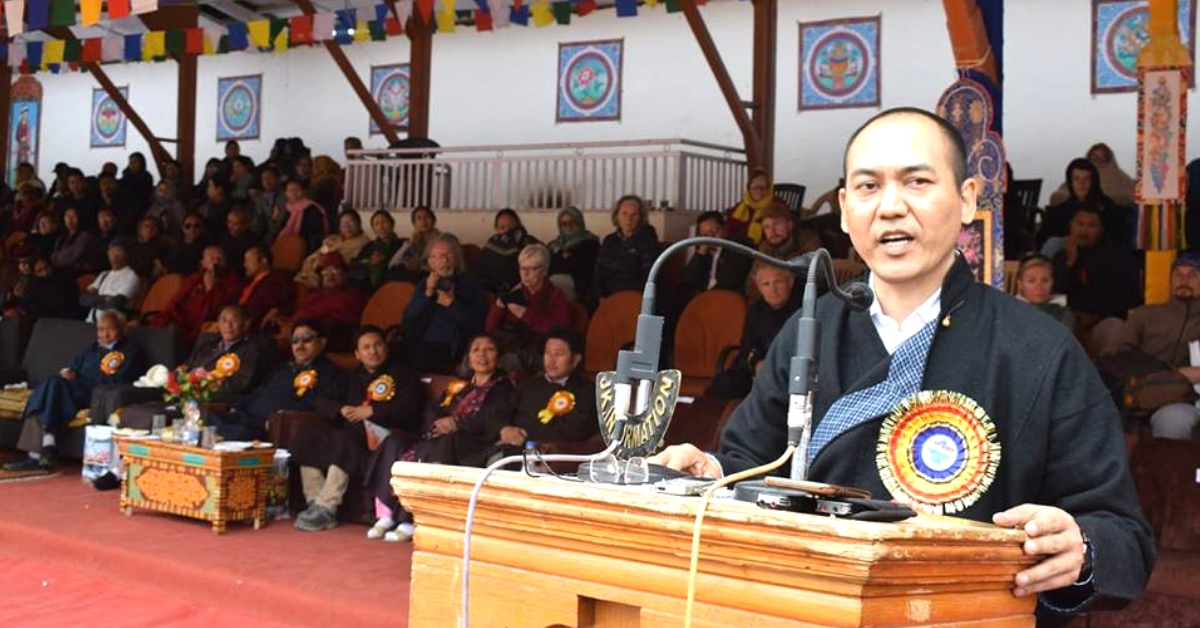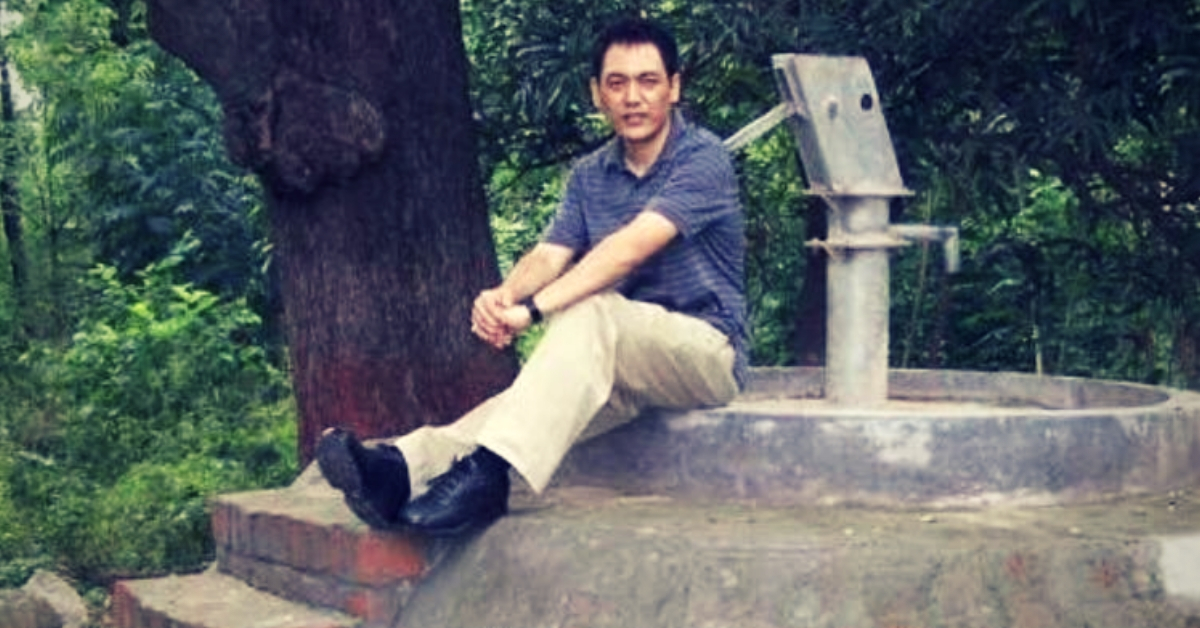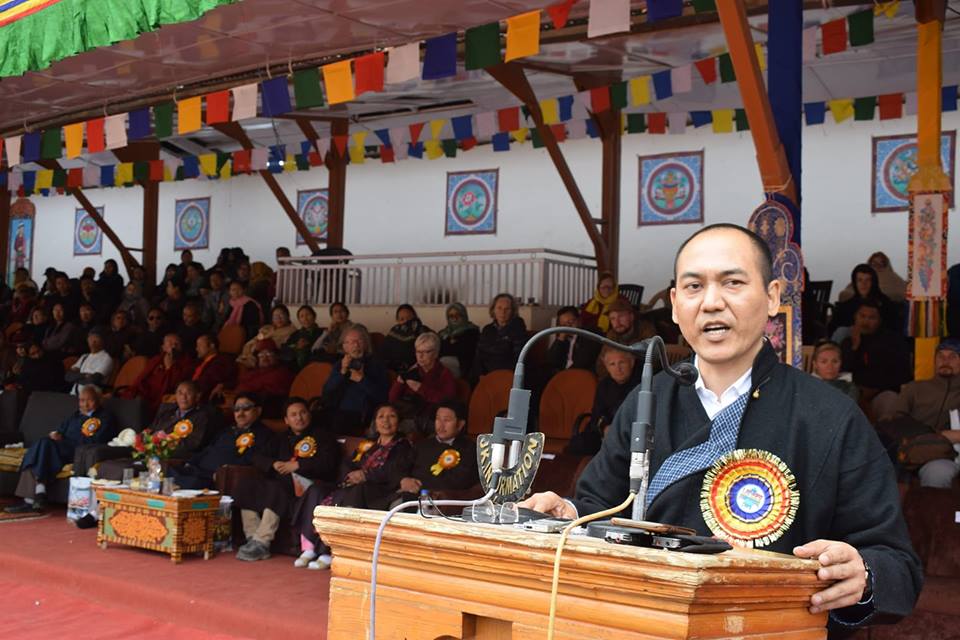From Ladakh Royalty to Serving UP’s Poorest. Meet India’s ‘Hardest Working’ IAS Officer
Incredibly, this IAS officer went all the way to the Supreme Court to prove his disability did not hamper his dedication!

India has some of the most hardworking bureaucrats (IAS, IPS, etc) in the world. Besides their own personal capacity, this is as much a product of the administrative system they operate under.
Back in 2008, The Economist had published a scathing indictment of this very administrative system. Among the bureaucrats its spoke to was Rigzin Samphel, the District Magistrate of Jalaun, Uttar Pradesh, which spans 564 villages and over 1.4 million people.
Working 16 hours a day, seven days a week, Samphel told the publication that he spent more than 60% of his time addressing individual complaints, while the rest goes in ensuring that the 65 governments departments under his authority in this district function properly, maintain law and order, collect revenue, conduct elections and oversee massive welfare and development projects.
Although the publication got some part of its assessment about the bureaucratic system in India right, what it fails to recognise is how amidst this avalanche of duties, these IAS officers somehow find a way to come up with innovative governance solutions.
Long before direct benefit transfer (DBT) became part of the popular Indian administrative lexicon, Samphel established a system of paying National Rural Employment Guarantee Act (NREGA) salaries of rural labourers directly into their bank accounts, thus reducing the scope for corruption and ensuring a more efficient implementation of the scheme.

For his work as the District Magistrate of Jalaun, he received the Prime Minister’s National Award for MNREGA in 2008.
Nonetheless, overcoming the odds to fulfil a certain objective wasn’t unknown to the 2003-batch IAS officer of the UP cadre, who hails from a royal family in Ladakh.
For the commerce graduate from the prestigious Shri Ram College of Commerce (SRCC), who also obtained an MBA degree from Delhi University, the road to becoming an IAS officer was also riddled with obstacles. During his student days, Samphel suffered a serious accident which seriously damaged his right leg, leaving him with a disability.
Ranked second among Scheduled Tribe candidates in 2003, Samphel was primed for the IAS until he was allotted the Indian Information Service. There have been multiple instances of people with disabilities not being allocated the post they deserve, and Samphel’s was another among a long list of cases. Unhappy with the allocation, he took the matter to the Delhi High Court, Schedule Caste/Schedule Tribe Commission, Cabinet Secretary, the Prime Minister and even the Supreme Court. After almost a two-year legal wrangle, he was finally allotted the Uttar Pradesh cadre in 2005. For those two years, he worked in the private sector to support himself.
Since his entry into the civil services, Samphel has gone onto the change the lives of many in Uttar Pradesh by merging the official authority he possesses with slick business management skills.
His year-long tenure (2010-11) as the DM of the flood-prone Bahraich, one of Uttar Pradesh’s most backward areas, saw a slew of initiatives that brought a sea change to the lives of locals. Every monsoon season, the district would witness massive floods with the Ghaghra river overflowing, which would cut locals off from drinking water.
Many would die on a regular basis as a result of consuming contaminated water. Responding to this dire requirement, Samphel introduced a unique pyramid shaped elevated hand pumps, delivering clean and potable water to those marooned during floods.
“I got the idea of an elevated hand pump from a villager. We installed over 800 such hand pumps before monsoon in 2010. MNREGA funds were used to hire labour. I got 100% cooperation from the gram pradhans. It was a people’s venture, not mine,” Samphel told the Times of India.
It was a simple innovation which saw locals raising existing hand-pumps from ground level to the highest flood level (HFL) or two to four metres above ground depending on the maximum height flood waters would reach.

Consulting with various engineers and administrators, Samphel decided that “on flat top platforms with sloping bases for the hand pumps” resulting in slopes that “would diminish the force of floodwater and the 2.9-metre-high platforms would offer a safe sport for people to stand on and draw water,” says this report in the Hindustan Times.
Refitting each hand pump would cost Rs 14,000. For 800 such hand pumps, the total cost would come to a whopping Rs 1.2 crore. Once again, Samphel found a way to acquire funds from the NREGA programme, which would be used for refitting these handpumps.
The National Disaster Management Authority (NDMA) soon recognised the potential of this innovation, and in 2015, former Chief Minister Akhilesh Yadav ordered his administration to implement this model in all 21 flood-prone districts.
When it came to floods, another concern among the locals, particularly the women, was the unavailability of decent latrine facilities in flood relief camps with traditional soak pits becoming unusable. As DM, Samphel introduced “high plinth pucca public conveniences with large septic tanks,” according to this India Today report.
Aside from these innovations, he also developed a way to stem the flow of foodgrains originally meant for distribution through the Public Distribution System (PDS) into the black market. Whenever the administration stocked these PDS shops, rational card holders would receive an SMS. Fearing that dealers could sell these foodgrains in the black market, those with their ration cards would come over the PDS shop immediately and pick up their respective stocks.
Also Read: Cloudbursts to Floods: How This Humble Farmer’s Son Became Ladakh’s ‘Weatherman’
“Development engineering is less about formulas and more about integrity. If an administrator is sensitive to the problems of the public, he can find innovative solutions within the given resources,” Samphel told India Today, back in 2010.
There are other such simple innovations to his credit. For example, as district magistrate of Farrukhabad, he devised a unique solution to the problem of commuters not wearing helmets. All petrol pumps would only fill up a commuter’s fuel tank if they were wearing a helmet.
Without one, a commuter couldn’t acquire petrol or diesel, and with strict enforcement of this initiative, commuters began wearing protective helmets.
More recently, he was part of the team that developed a cloud-based app named ‘m-sehat’ for health workers in Uttar Pradesh. The app, which was launched in October 2015, would assist health workers in recording maternal and infant data in real time.
His administrative competence and popularity with the locals earned him two stints as special secretary to both former CM Akhilesh Yadav and current CM Yogi Adityanath, overcoming their ideological differences before he was sent on inter-state cadre deputation to his home state of Jammu and Kashmir, as the secretary in the tourism department.

Besides winning recognition from the Centre, he was also awarded the Rajeev Narayan Foundation Public Service Award (2010-11) and JP Morgan Social Impact Award (Health and Sanitation) in 2010 for his work in the Bahraich district. In service for over a decade, Samphel has been successful in listening to the concerns of India’s most ignored, and helped them find innovative solutions with remarkable honesty and integrity.
Also Read: ‘Why Should We Be Dumb?’ How One Monk’s Speech Changed The History of Ladakh
The pride of Ladakh, who has served the state of Uttar Pradesh faithfully, is back in his home state of Jammu & Kashmir developing the tourism sector—an integral facet of the region’s economy.
(Edited by Gayatri Mishra)
Like this story? Or have something to share? Write to us: [email protected], or connect with us on Facebook and Twitter.
If you found our stories insightful, informative, or even just enjoyable, we invite you to consider making a voluntary payment to support the work we do at The Better India. Your contribution helps us continue producing quality content that educates, inspires, and drives positive change.
Choose one of the payment options below for your contribution-
By paying for the stories you value, you directly contribute to sustaining our efforts focused on making a difference in the world. Together, let’s ensure that impactful stories continue to be told and shared, enriching lives and communities alike.
Thank you for your support. Here are some frequently asked questions you might find helpful to know why you are contributing?


This story made me
-
97
-
121
-
89
-
167











